1990
February
19th
Photoshop 1.0. The program was only available for the Macintosh platform (Mac System 6.0.3) and required at least 2 MB of RAM and an 8 MHz processor for its operation.
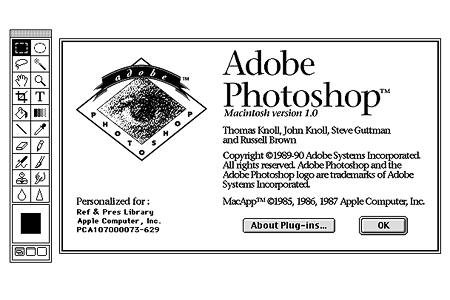
1990
September
10th
Archie. The search engine enabled its users to find and download specific files on the Internet by indexing files stored on public FTP servers. Its name comes from the word archive, dropping the letter v. Archie is often considered to be the world’s first Internet search engine ever. At the end of the 1990s, the search engine gradually ceased to exist.
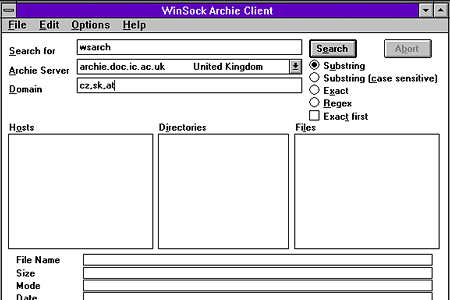
1990
December
25th
Tim Berners-Lee created the world’s first web browser, called WorldWideWeb. The browser was also a simple WYSIWYG (What You See Is What You Get) editor for editing web pages. WorldWideWeb only worked with the NeXTStep operating system. Later, the browser was renamed Nexus to avoid confusion with the World Wide Web (WWW).
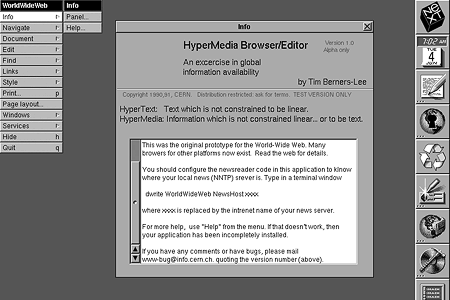
1991
April
Gopher system was created at the University of Minnesota as a text-based system that used the hierarchical menu structure for navigation. It was a system working on a client-server basis. Gopher integrated the services of FTP, Usenet, Veronica, Archie and WAIS. Since 1996, Gopher has been on a decline and is currently used very rarely.
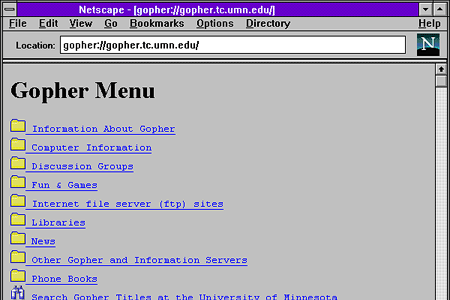
1991
May
14th
Line Mode Browser (The Libwww Line Mode Browser). This was the second browser ever made for the World Wide Web.
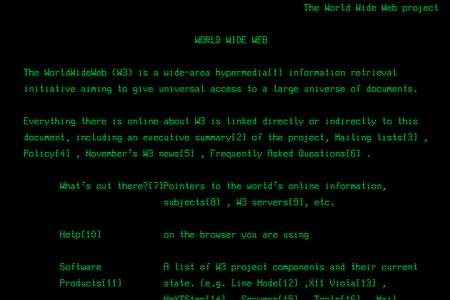
1991
August
Tim Berners-Lee compiled the first index of websites called the WWW Virtual Library. The hyperlinks were organized into a tree of categories and subcategories depending on the individual fields of human activity or interest.
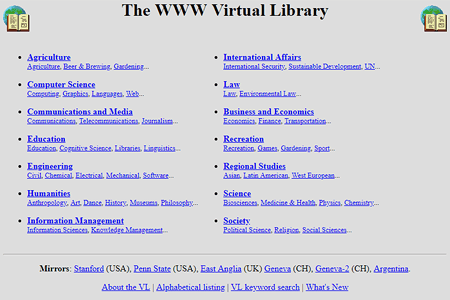
1991
August
6th
Tim Berners-Lee launched the world’s first website at http://info.cern.ch/hypertext/WWW/TheProject.html. Unfortunately, the original website has not been preserved until today and the link shows only its 1992 copy.
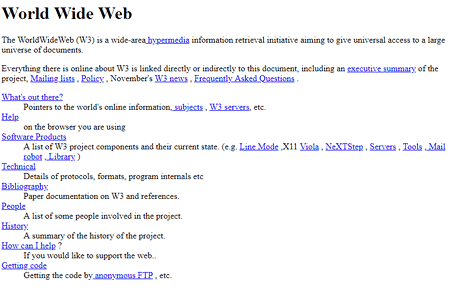
1991
October
29th
Tim Berners-Lee, published a document entitled HTML Tags. The document contained a description of the first 18 HTML tags: <title>, <nextid>, <a>, <isindex>, <plaintext>, <listing>, <p>, <h1>…<h6>, <address>, <hp1>, <hp2>…, <dl>, <dt>, <dd>, <ul>, <li>,<menu> and <dir>. The design of the first version of HTML language was influenced by the SGML universal markup language.
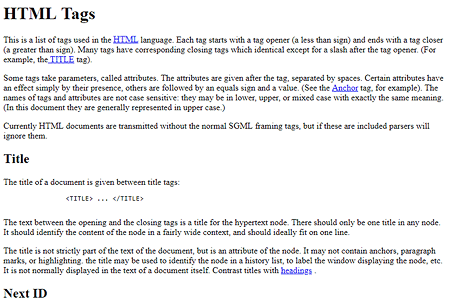
1991
November
Hypertext Transfer Protocol (HTTP) is an Internet protocol designed to exchange hypertext documents (images, websites, etc.) between the server and the web browser. The first protocol design, later called HTTP v0.9, was created by Tim Berners-Lee as part of the WWW service specification. The HTTP v0.9 version was extremely simple, using only the GET method with one parameter, i.e. the name of the requested document.
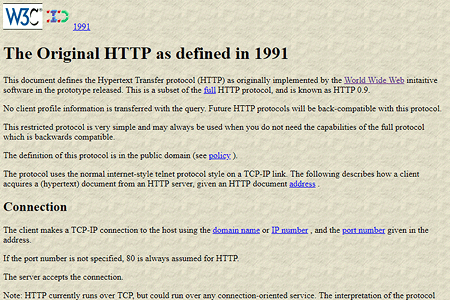
1991
December
6th
Paul Kunz launched the first web server in the USA in the Stanford Linear Accelerator Center (SLAC). Paul Kunz was inspired by the World Wide Web project directly from its creator Tim Berners-Lee, whom he met in person at the CERN Swiss Research Center in September of the same year.
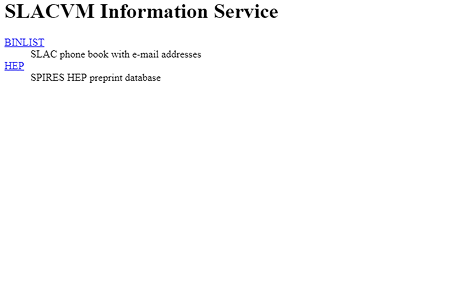
1992
March
9th
Pei-Yuan Wei developed the ViolaWWW browser for Unix while he was working at the University of California at Berkeley. ViolaWWW was the first browser to support scripting, table rendering and forms. The browser also contained a simple stylesheet to define the website’s visual appearance. In March 1994, Pei-Yuan Wei released its last version, the lone developer no longer being able to keep up with the Mosaic Communications Corporation, which launched the Mosaic Netscape 0.9 browser the same year.
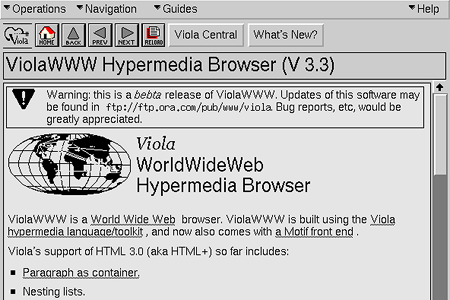
1992
April
12th
BBEdit freeware HTML and text editor. The editor was designed for the Macintosh platform.
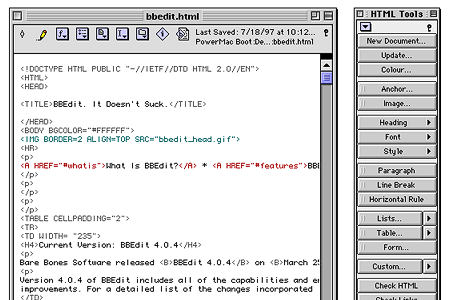
1992
July
18th
Les Horribles Cernettes (The Horrible CERN Girls) onto the info.cern.ch website. This photo became one of the first images to be published on the World Wide Web.
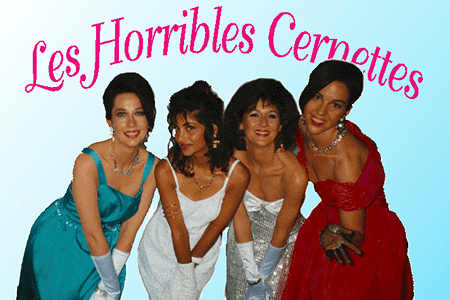
1992
November
search engine called Veronica at the University of Nevada. The search engine was used to browse and index information in Gopher menu items. The name Veronica is an acronym for “Very Easy Rodent-Oriented Net-wide Index to Computer Archives”.
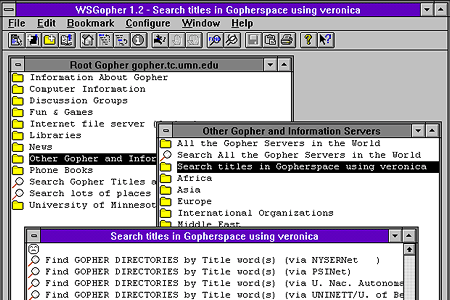
1993
April
22nd
Marc Andreessen and Eric Bina from the University of Illinois programmed one of the first web browsers with a graphical interface.
Mosaic (full name NCSA Mosaic) worked on multiple platforms including Windows and was available for free, thanks to which it gained worldwide popularity among the general public shortly after being launched. Its development officially ended on January 7, 1997.
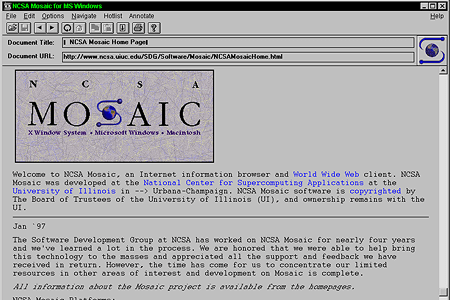
1993
November
30th
Aliweb search engine (Archie-Like Indexing in the Web) designed specifically for the World Wide Web service. In May 1994, Aliweb was introduced to the public at the first international WWW conference at the CERN Research Center in Geneva.
Aliweb did not have a web crawler to search and index web pages. Sites were added to the database upon request from users using special files that contained their exact description and location.
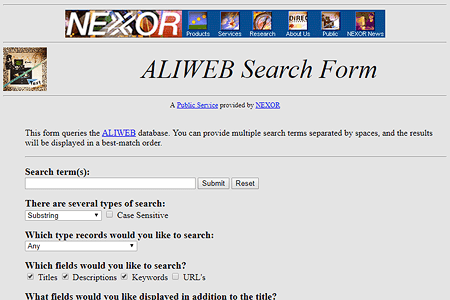
1994
January
Jerry Yang and David Filo, two Ph.D. students from Stanford University, created a list of websites entitled “Jerry and David’s Guide to the World Wide Web.” In March 1994, the portal was renamed Yahoo! and the yahoo.com domain was registered on January 18, 1995. Yahoo is an acronym for “Yet Another Hierarchical Officious Oracle”. In March 1995, the Yahoo! search engine was launched as part of the portal.
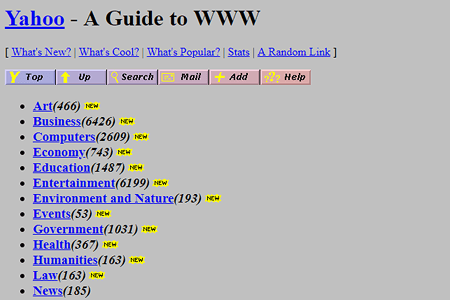
1994
July
3rd
Martijn Koster presented the robots.txt standard (Robots exclusion standard or Robots exclusion protocol) as part of the W3C www-talk mailing list. The rules defined in the robots.txt file are used to prevent or restrict indexing robots from accessing a website.
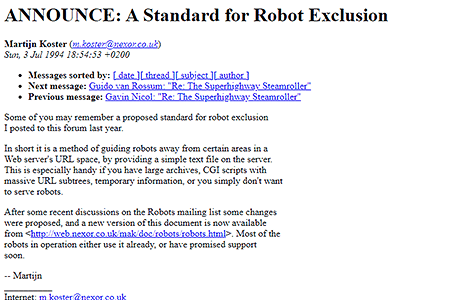
1994
July
13th
first version of an online HTML validator. The tool served to check the validity of documents, i.e. compare the document code with valid standards and look for potential errors.
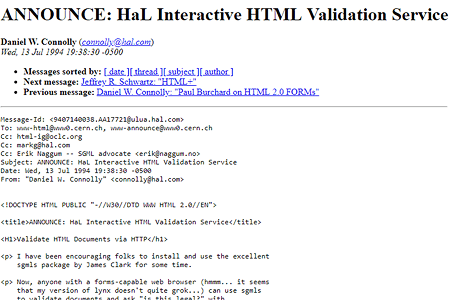
1994
October
1st
Tim Berners-Lee founded an international organization called World Wide Web Consortium (W3C). The main objective of the consortium is the development of Web standards for the World Wide Web (WWW). For example, W3C developed standards for HTML, XHML, XML, or CSS markup languages. Another aim of the organization is education and development of Web Accessibility Rules (WCAG).
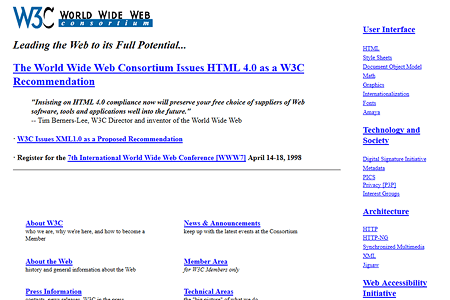
1994
October
13th
Mosaic Netscape 0.9, the first one in a series of browsers, called Netscape Navigator in the subsequent versions. Shortly after being released, Mosaic Netscape 0.9 and Netscape Navigator 1.0 (released on December 15, 1994) became widely popular and, within a few months, assumed a dominant position on the market.

1994
October
27th
the first web banner in Internet history on the HotWired magazine website. The first web banner in the world was 476×56 px and contained only the phrase “Have You Ever Clicked Your Mouse Right Here?”. Clicking on the banner led to a virtual tour of world galleries and museums.
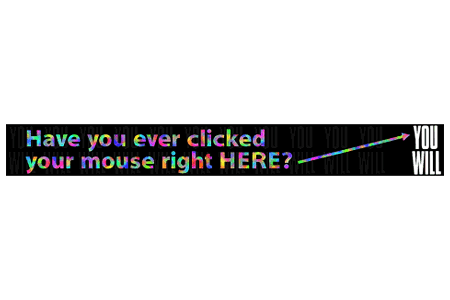
1994
November
GeoCities in 1995. The original concept of the service was to create a virtual community of websites organized in “internet cities”.
2 MB of free disk space. In 1999, GeoCities was bought by Yahoo! and ten years later, on October 26, 2009, Yahoo! definitively terminated the GeoCities service.
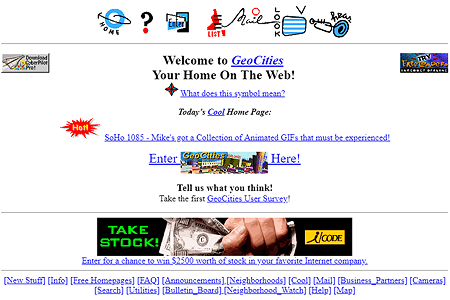
1995
April
10th
Opera Software first introduced to the public a new MultiTorg Opera 1.0 web browser that used MDI (Multiple Document Interface) technology. The use of MDI enabled users to simultaneously open several windows of webpages within the browser. As of version 2.0, the browser’s name was shortened to Opera.
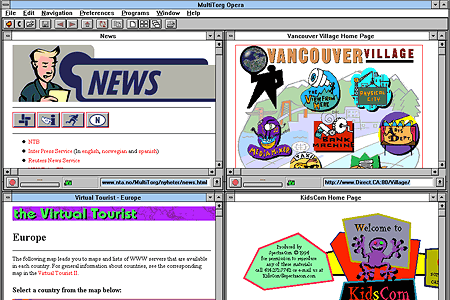
1995
April
13th
Lycos’s oldest search engines. The name of the search engine is derived from Lycosidae, a Latin name for a family of wolf spiders.
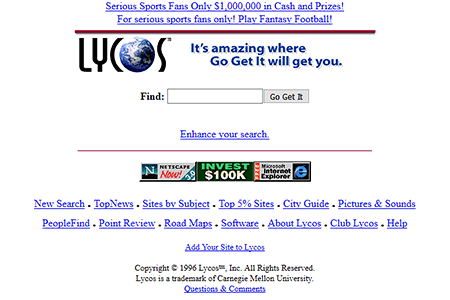
1995
May
User Experience was probably first heard in public at the CHI ’95 Conference Companion on Human Factors in Computing Systems held on May 7-11, 1995 in Denver, Colorado. The combination of the two words User Experience first appeared in a presentation by Donald Norman, Jim Miller and Austin Henderson of Apple Computer entitled What You See, Some of What’s in the Future, And How We Go About Doing It: HI at Apple Computer, particularly in the sentence: “In this organizational overview, we cover some of the critical aspects of human interface research and application at Apple or, as we prefer to call it, the ‘User Experience.’”
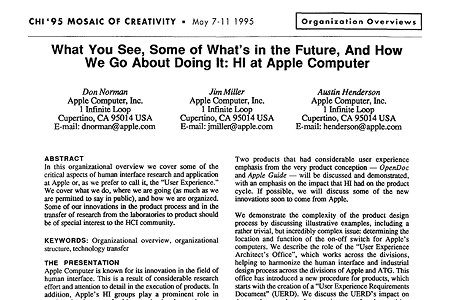
1995
May
25th
Jeffrey Zeldman, Steve McCarron and Alec Pollak – created an official website for Batman Forever. At the time, it was one of the first web projects that used the WWW service as a marketing and visual medium.
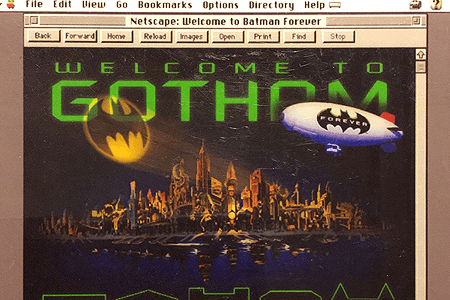
1995
June
8th
Rasmus Lerdorf designed the first version of the popular PHP 1.0 scripting language. The term PHP originally stood for Personal Home Page. In 1997, Israeli developers Andi Gutmans and Zeev Suraski rewrote the parser to create the basis for PHP 3. They also changed the name of the language to a recursive acronym for PHP: Hypertext Preprocessor.
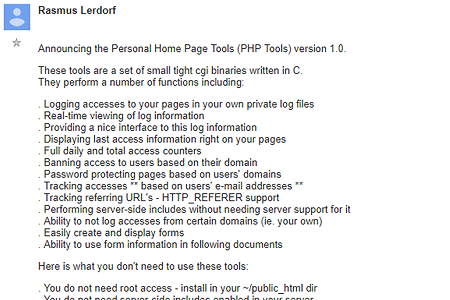
1995
July
16th
Jeff Bezos, launched one of the first online stores on Amazon.com on July 5, 1994. Amazon first began as an online bookstore and later expanded its range of products to CDs, DVDs, software, clothes, toys, etc. In 1998, Amazon purchased the Internet Movie Database (IMDb), and, a year later, the Alexa.com web service. In 2002, Amazon started running a cloud platform called Amazon Web Services (AWS), and as of November 2007, the Amazon Kindle e-reader belongs to one of its major products.
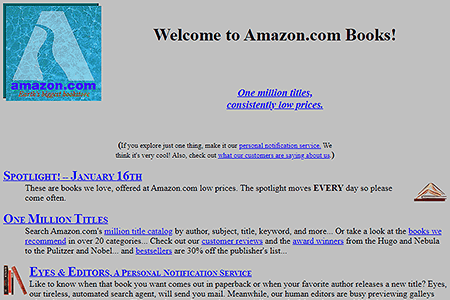
1995
August
16th
Internet Explorer 1.0. In the original version of Windows 95, a web browser was not available, as Microsoft underestimated the potential of the rapidly developing Internet.
Internet Explorer 1.0 occupied only 1 MB of disk space and its features were considerably limited compared to other browsers at the time.
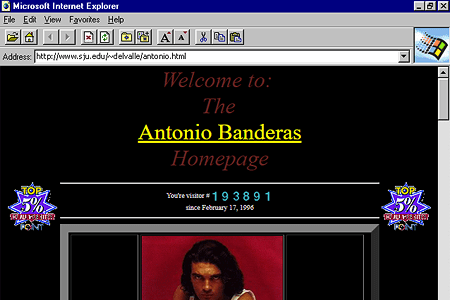
1995
September
3rd
Pierre Omidyar, programmed a simple auction website called AuctionWeb. The first item Pierre Omidyar allegedly sold on the portal was his own broken laser pointer for $ 14.83. In September 1997, the portal was officially renamed to eBay. In October 2002, eBay switched to the PayPal online payment system and in 2005, eBay bought Skype VoIP.
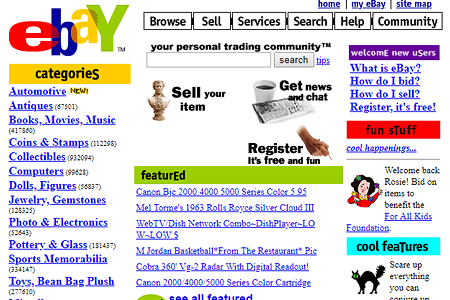
1995
September
18th
Netscape Navigator 2.0 as its new major product. The browser contained a wide range of innovations and enhancements. Among other features, Netscape Navigator 2.0 supported JavaScript, animated GIFs, the HTML tag <frame> and proprietary tag <blink>. Netscape Mail 2.0 was also part of version 2.0, making Netscape Navigator 2.0 a fully operational Web application package.
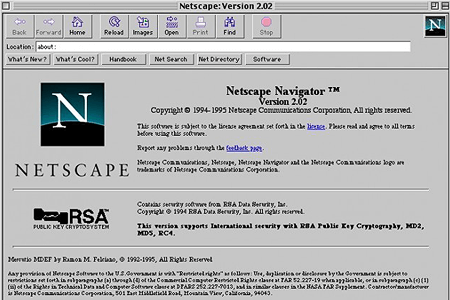
1995
November
FrontPage 1.0 editor for WYSIWYG web development. In January 1996, Microsoft bought Vermeer and, in June, released an editor called Microsoft FrontPage 1.1. Microsoft expected that extending its software portfolio to a web editor would provide a considerable advantage in the impending browser wars.
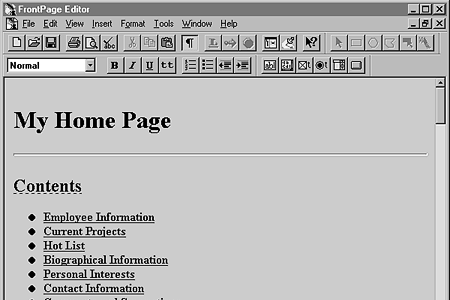
1995
November
24th
HTML 2.0. HTML 2.0 supported forms, tables, graphics, and a number of new tags, such as <!DOCTYPE>, <head>, <body>, <form>, <img>, <input>, <select>, <strong> and others.
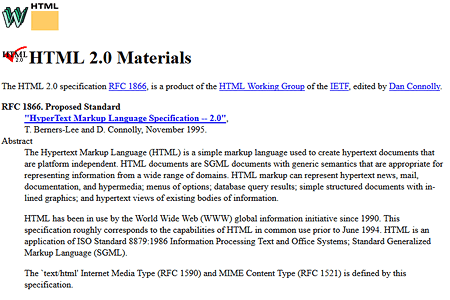
1995
December
Adobe PageMill 1.0. The editor allowed users to easily create websites without any knowledge of the basics of HTML.
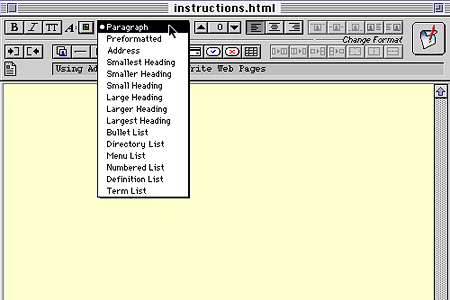
1995
December
Lynda Weinman, a computer instructor and graphic designer, launched one of the first online libraries of training courses for web developers at lynda.com.
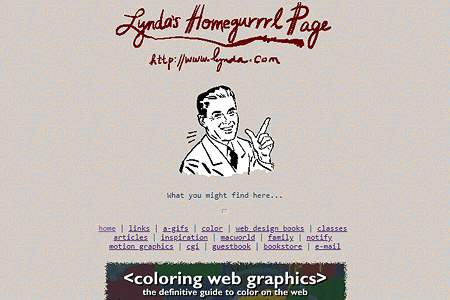
1995
December
4th
Brendan Eich of Netscape designed the first version of an object-oriented JavaScript that became widely used to create interactive websites. JavaScript later become the basis for other programming languages, such as ActionScript used in Macromedia Flash. In 1998, JavaScript was standardized by ISO.
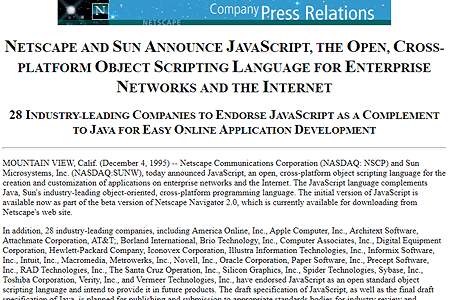
1995
December
15th
AltaVista search engine. Thanks to high-performance hardware, AltaVista was able to perform a quick full-text search across a wide range of websites. In 1997, the first free online translator Babel Fish became part of AltaVista. In 2003, AltaVista was taken over by Yahoo! and due to Google’s dominant position among search engines, the AltaVista project was terminated on July 8, 2013.
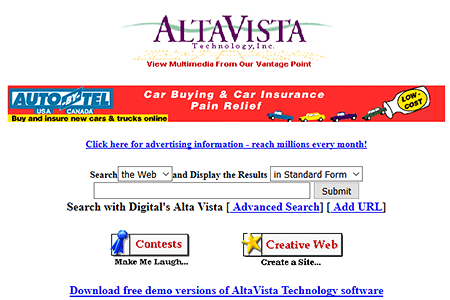
1996
April
1st
Brewster Kahle and Bruce Gilliat founded a company called Alexa Internet. The company’s original vision was to develop advanced web navigation that would continually improve itself on the basis of user-generated data. For this purpose, the Alexa toolbar 1.0 was created in 1997 as an extension of the browser. In 1999, Alexa Internet was bought by Amazon.
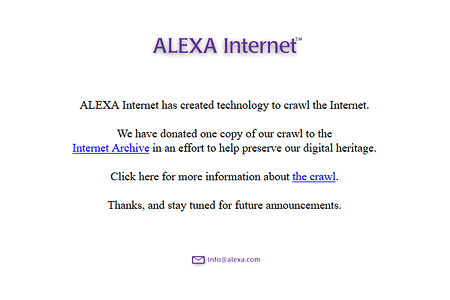
1996
May
12th
Brewster Kahle founded a non-profit organization called the Internet Archive. The Internet Archive digital library is currently the largest archive of digital documents in the world. Since 1996, more than 866 billion websites have been stored in the archive (*as of May 2024).
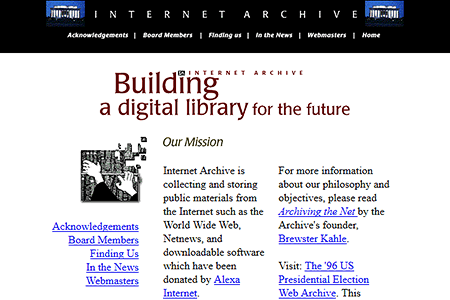
1996
September
JScript 1.0. By changing the name to JScript, Microsoft wanted to avoid potential patent litigation with Sun Microsystems, which created the Java programming language.

1996
December
Active Server Pages (ASP 1.0), a server-side script engine for dynamically generated websites. A distinctly modified and improved ASP technology, ASP.NET 1.0, was released in January 2002.

1996
December
17th
Cascading Style Sheets, level 1 (CSS1). Cascading styles describe how to display elements in documents written in HTML, XHTML, and XML markup languages.
Håkon Wium Lie, who was working at CERN under Tim Berners-Lee at the time.
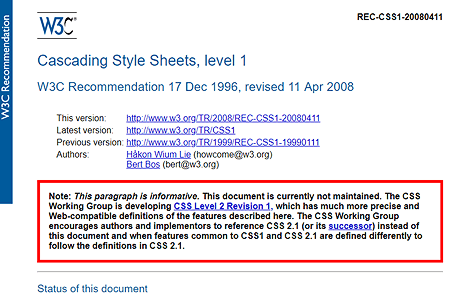
1996
December
18th
FutureSplash animator. The program was used to create vector animations that could be played with the FutureSplash Viewer plugin in the then popular Netscape Navigator and Internet Explorer. In December 18th 1996, Macromedia released an enhanced version of this program called Macromedia Flash 1.0.
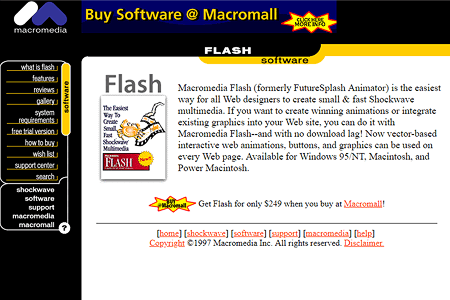
1997
January
14th
HTML 3.2 markup language. The original HTML 3.0 version had never become a standard, as it was too complicated, and the leading Microsoft and Netscape developers had a problem implementing it. In the HTML 3.2 specification, among others, new tags appeared, such as <center>, <div>, <font>, <script>, <style>.
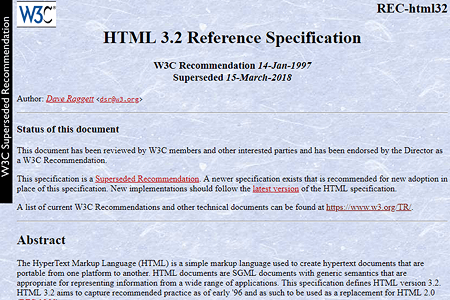
1997
April
7th
Web Accessibility Initiative (WAI) officially launched its activity. The main goal of the WAI project is to improve the accessibility of websites and WWW services for users with disabilities.
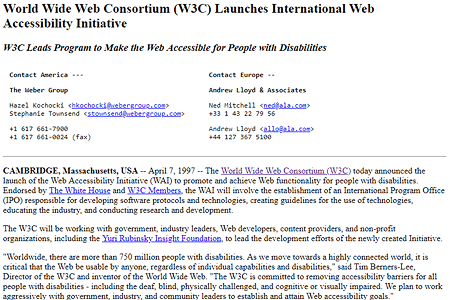
1997
May
Search Engine Optimization (SEO) is a term indicating a set of techniques and rules that are applied to provide a better position of websites in search results for selected keywords. The first use of the term is not fully documented. According to Danny Sullivan, founder of Search Engine Watch, the term Search Engine Optimization first appeared in May 1997.
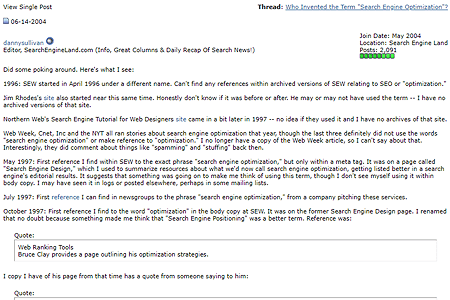
1997
June
11th
the first browser war, Netscape released Netscape Communicator 4.0, a web application suite. It included, for example, Netscape Navigator 4.0 web browser with CSS1 support, Netscape Messenger email client, Netscape Composer HTML editor and Netscape Calendar. In January 1998, Netscape announced that the subsequent versions of the software will be developed as open source projects under Mozilla and will be available to users free of charge.
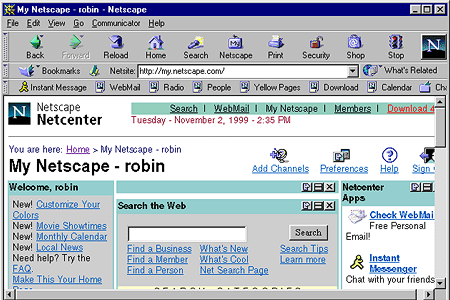
1997
September
30th
Internet Explorer 4.0. IE 4.0 was integrated into the Windows 95 and Windows 98 operating systems and was freely available for the Mac OS, Solaris and HP-UX platforms. The distribution methods and integration of Internet Explorer into Windows subsequently became one of the subjects of legal proceedings between the US government and Microsoft over the abuse of a dominant market position. Internet Explorer 4.0 gained more than 60% market share at the beginning of 1999, contributing significantly to Microsoft winning over Netscape in the so-called first browser war.
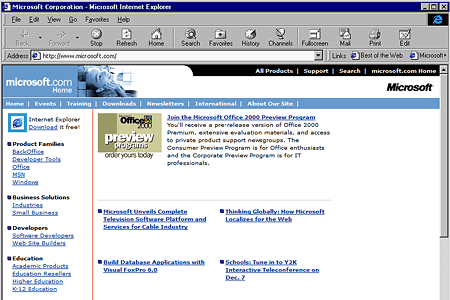
1997
October
Dynamic HTML (DHTML) was first introduced in connection with the release of Internet Explorer 4.0. It did not refer to a new stand-alone language, but only a combination of the HTML, CSS, and JavaScript technology to enhance interactivity and website dynamics.
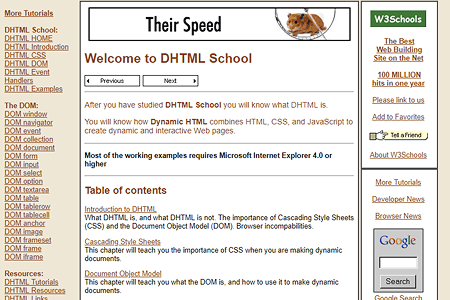
1997
December
Dreamweaver 1.0 website editor. The editor allowed users to switch between text and WYSIWYG (What You See Is What You Get) mode. The first version of the Dreamweaver editor was only available for Mac OS, and in March 1998, a version for Windows was released.
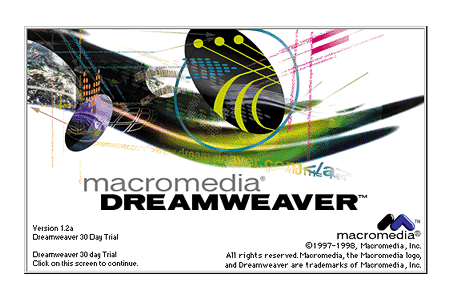
1997
December
18th
W3C HTML Validator. The tool for the validation of documents (HTML, XHTML, MathML, etc.) was based on an older project entitled The Kinder, Gentler HTML Validator, created by Gerald Oskoboina.
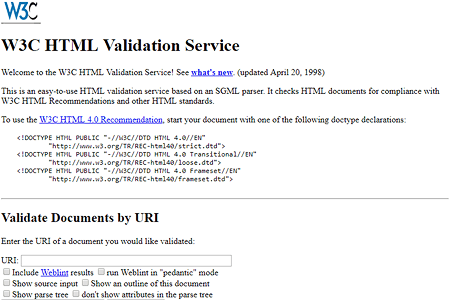
1997
December
18th
HTML 4.0 specification. The HTML 4.0 specification was divided into three variants: Strict, Transitional, and Frameset, and its aim was to separate the HTML semantics and the document layout (formatted using only CSS) into two separate parts. In December 1999, recommendations were published for a revised version, HTML 4.01.
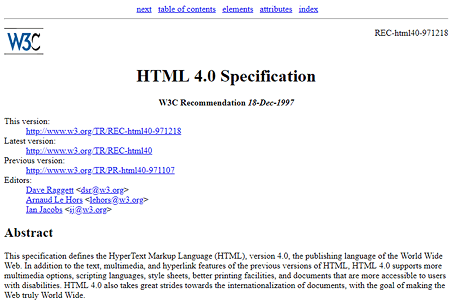
1998
January
22nd
Jeffrey Zeldman and Brian Platz began publishing the mailing list called A List Apart, which provided readers with regular news from the world of web design, web standards, and web development. The project gained popularity among its readers, and within a few months, A List Apart acquired more than 16,000 subscribers. In January 1999, Jeffrey Zeldman started publishing A List Apart as a webzine.

1998
February
10th
XML 1.0 specification. Extensible Markup Language (XML) is a general markup language designed to easily exchange information between applications and to publish documents that contain at least partially structured data. XML is a simplified subset of the older SGML language. The XML language does not deal with document layout and consistently separates form and content. For different types of data, XML allows you to create custom markup languages (applications). By combining XML with HTML, the new XHTML markup language was created in 2000.

1998
March
Design is Kinky, founded by Andrew Johnstone, was one of the first design community websites. The website regularly presents graphic works, photographs, expert articles or profiles of artists who have decided to publish their work online. In 2018, the project Design is Kinky terminated its activity.

1998
March
31st
Netscape Communicator 5.0 web browser, which became the beginning of a community-based open source project called Mozilla. In 2003, the Mozilla Foundation, a non-profit organization, was founded on the basis of the original project.

1998
April
Macromedia Fireworks 1.0 graphics program. The program was able to work with both vector and bitmap graphics and was designed specially for web designers.

1998
May
12th
CSS2 specification. The second cascade style specification included a number of new features such as absolute, relative and fixed positioning of elements, z-index for element overlap, minimum and maximum width or height of elements, type of media, etc. In June 2011, W3C published a revision of the second version of cascading styles, CSS 2.1.

1998
June
5th
Open Directory Project (ODP or DMOZ, based on the original domain, directory.mozilla.org). The content of the catalog was created and maintained by a community of volunteers, and it was one of the largest internet catalogs at the time. The DMOZ project was owned by AOL for most of its duration. The project ended its activity on March 17, 2017.

1998
July
Adobe ImageReady 1.0 bitmap graphics editor. The program was designed to work with web graphics and to create rollover effects or short animations in the GIF format. Since version 2.0, ImageReady has been part of Photoshop.

1998
September
4th
Larry Page and Sergey Brin, created the Google search engine. Google originally started as a research project whose aim was to find relevant search results using a mathematical algorithm. The algorithm, later called PageRank, analyzed relationships between individual webpages based on their cross-references, thus assessing their importance. The name Google is a deliberate misspelling of the word googol, which refers to a very high number – 1 followed by a hundred zeros (10100).

1998
October
Kaliber10000 (K10k). The K10k webzine published graphical works of talented designers on a regular basis and became an important source of inspiration for the first generation of designers who started using the web as a visual medium. In October 2011, K10k terminated its activity.

1998
October
Todd Fahrner began working on the Box Acid Test (Acid1) project, which tested if web browsers supported the CSS language. The test itself is a simple web page that contains several HTML elements modified by CSS. The browser either displays the page correctly and passes the test or it fails. Most of the browsers of the time failed the Acid1 test. In January 1999, the Box Acid Test was included in the W3C’s official CSS1 set of tests.

1999
March
Favicon (a combination of the words favorite and icon) first appeared in Internet Explorer 5.0. The term favicon refers to a webpage icon that appeared in older browsers in the address bar next to the URL or in favorites. Originally, favicon had to be placed in the root directory of the website under the name favicon.ico, and its dimensions were typically 16×16 px or 32×32 px. In December 1999, favicon was standardized by W3C in the recommendation for HTML 4.01.

1999
March
18th
Internet Explorer 5.0. The browser was integrated into the Windows 98 SE operating system, and version 5.01 was part of Windows 2000. In July 2000, Internet Explorer 5.5 was released, integrated into Windows ME. Internet Explorer 5.0 was also tied to Microsoft Office 2000. At the beginning of 2000, the fifth version of Internet Explorer had more than 50% market share. Internet Explorer 5.0 thus became one of the key participants in the first browser war.

1999
April
Darcy DiNucci published an article entitled “Fragmented Future” in the Print magazine, in which the term Web 2.0 was first introduced. The term refers to the development phase of the Web in which the content of websites is created and shared primarily by the users themselves. Typical Web 2.0 examples include social networking sites, web forums, internet encyclopedias, or photo/video sharing portals. In 2004, Tim O’Reilly and Dale Dougherty held the first Web 2.0 conference, during which the term Web 2.0 was brought to the attention of a wider public.

1999
May
5th
Web Content Accessibility Guidelines (WCAG 1.0). The WCAG 1.0 consists of 14 general rules that represent the basic principles of accessibility. In addition to these rules, WCAG 1.0 also includes checkpoints that explain given problems. Each checkpoint is assigned a priority on the following scale: the highest (priority 1), medium (priority 2) or lower (priority 3).

1999
June
Adobe Photoshop 5.5. The new version of Photoshop included the Adobe ImageReady 2.0 program designed to work with web graphics. Another new feature of Adobe Photoshop 5.5 was Save for Web, which allowed designers to compress images for the web.

1999
August
23rd
Blogger.com. The new blogging platform gained a large community of users in the subsequent years. In February 2003, Blogger.com was bought by Google.

1999
November
Eric Jordan, Tony Novak and John Carrol founded a digital creative agency called 2Advanced Studios. The agency was renowned for its innovative, high-end design using Flash technology. In the field of web design, the 2Advanced Studio received many prestigious awards.

1999
November
Zombo.com website was created as a parody of the creative, but, from the user’s perspective, largely pointless flash intros, which were trending at the end of the 1990s. Zombo.com is a simple, several-minute flash intro constantly repeating the words: “Welcome… to ZomboCom. This… is… ZomboCom. Welcome. This is ZomboCom; welcome… to ZomboCom.” The website had gained considerable popularity over the years and had become one of the most popular internet memes in its time.

1999
December
Jakob Nielsen, an expert in web design and web usability, published Designing Web Usability: The Practice of Simplicity. The book became one of the basic handbooks in the field of web usability and the emerging field of user experience design (UX). In 1998, Jakob Nielsen and Donald Norman founded the Nielsen Norman Group, which engages in research, consulting and education in the field of user experience and computer interface design.

2000
January
26th
XHTML 1.0 specification. The Extensible HyperText Markup Language (XHTML) is a markup language for creating hypertext documents in an Internet environment. XHTML originated from an integration of XML and HTML and was divided into three versions: Strict, Transitional, and Frameset. According to W3C’s original plans, XHTML was supposed to be the successor to HTML, whose development was completed by version 4.01. However, in 2007, a new version of HTML started being developed, labeled HTML5.

2000
May
5th
Rob Ford established the Favorite Website Awards (The FWA). The FWA website was originally conceived as a prestigious gallery of unique and innovative websites in terms of design created with Macromedia Flash. Due to a decline of the Flash technology, it is now possible to submit websites, mobile applications, or any creative projects regardless of the technology used. A panel of experts selects from nominated websites the winners in the categories FWA of the day, FWA of the month and FWA of the year.

2000
May
22nd
PHP 4.0.
PHP 4.0 is based on an open source scripting engine called Zend Engine. The name Zend is a composite of its creators’ names Zeev and Andi. The Zend Engine is written as a highly optimized and powerful backend that can also be used outside PHP applications.

2000
August
7th
DeviantArt. In its beginnings, the portal brought together enthusiasts who modified the design of their computer programs and applications. At present, DeviantArt is the largest social networking site for artists and art enthusiasts.

2000
August
24th
Macromedia Flash 5.0 multimedia software. It was the first version in which ActionScript 1.0 object-oriented programming language was fully implemented. Older versions of Macromedia Flash contained only sets of very simple programming commands. Thanks to ActionScript 1.0, users could create complex web applications or more complicated animations. ActionScript is based on a standardized JavaScript version called ECMAScript.

2000
October
Hi-ReS!, a London-based digital agency, designed a website for Darren Aronofsky’s film, Requiem for a Dream. Hi-ReS! used Flash technology to design the website in a fresh and creative way to provide a strong artistic and visual experience for its visitors.

2000
October
13th
Steve Krug, a UX designer and information architect, published Don’t Make Me Think. The book deals with web usability and the interdisciplinary field of Human-Computer Interaction (HCI). In his publication, Steve Krug develops the idea that a well-designed computer program or website should allow users to perform their intended tasks in the simplest way possible, without having to think hard about how to perform them.

2001
January
15th
Jimmy Wales and Larry Sanger founded Wikipedia, a multilingual internet encyclopedia. The content of the encyclopedia is shared under a free and open license of the Creative Commons. Volunteer contributors from around the world participate in the creation of Wikipedia entries. Wikipedia’s precursor was the Nupedia web encyclopedia, to which, unlike Wikipedia, only experts were allowed to contribute. At the beginning of 2023, Wikipedia contained articles written in 331 languages.

2001
March
online magazine called Pixelsurgeon. The magazine website provided fans with regular news, interviews and tips on interesting sources from the world of design with a focus on the Internet. In November 2007, Pixelsurgeon ended its activities due to a lack of time.

2001
April
4th
Media Queries specification. The original idea for the Media Queries module appeared in the first draft of the CSS specification by Norwegian programmer Håkon Wium Lie in October 1994. However, this proposal did not become part of CSS1.

2001
August
27th
Internet Explorer 6.0. IE 6 was integrated into Windows XP and was also compatible with previous versions of the system down to Windows 98. Despite a significant amount of security flaws and lack of support for web standards, Internet Explorer 6.0 gained more than 80% market share in 2004. Together with earlier versions of IE 5.0 and IE 5.5, the proportion of Internet Explorer browsers in 2004 was more than 90%.

2001
September
4th
Scalable Vector Graphics (SVG) is a graphical vector file format based on the XML markup language. SVG has become the basic open format for vector graphics on web pages. The SVG format has been developed since 1998 by W3C and is currently fully supported by all major browsers.

2001
October
24th
The Internet Archive organization launched a free digital archive of websites for the general public called the Wayback Machine. The oldest pages stored in the archive date back to 1996. In October 2024, the Wayback Machine maintained more than 866 billion versions of websites from various time intervals.

2001
December
Audi by the Razorfish digital agency was one of the first to modify its content based on the size of the web browser window. Audi.com was “optimized” for 640×480 px, 800×600 px and 1024×768 px. However, Audi.com was not a classic example of responsive web design as we know it today, but rather a dynamic customization of design using JavaScript, based on a detection of browser resolution.

2002
April
Tantek Çelik came up with a solution called Box Model Hack while working on Internet Explorer 5 for Mac. The application of this hack makes it possible to change the DOCTYPE declaration, which allows web developers to define which CSS Box Model will be used in Internet Explorer.

2002
June
5th
Mozilla 1.0 web browser. The basis for Mozilla 1.0 was Gecko, an open source rendering engine which significantly improved the support of web standards.

2002
September
RSS (Rich Site Summary or more often also Really Simple Syndication) belongs to the family of XML formats. The technology is designed to read content and news on websites or, in general, to syndicate content. The beginnings of the RSS format date back to 1999 when Netscape developed the first version of RSS 0.9. In 2002, UserLand Software released RSS 2.0.

2003
May
8th
Dave Shea launched a community gallery of websites called CSS Zen Garden. The project offered a simple HTML template to be downloaded, the graphic design of which could be customized by any web designer, but only with the help of cascading styles and one’s own pictures.

2003
May
14th
Jeffrey Zeldman, published a book entitled Designing with Web Standards. In his book, Jeffrey Zeldman explores the benefits of implementing web standards. Using standards correctly allows web designers to create accessible and user-friendly websites that work well in a wide range of browsers.

2003
May
27th
WordPress 0.7. The publishing system is based on PHP and MySQL technology and is developed under the GNU GPL free software license. The predecessor of WordPress was the b2/cafelog blogging platform. WordPress is currently the most popular content management system, and more than 30% of websites are using it worldwide.

2003
June
23rd
Safari 1.0. The browser uses the WebKit renderer to display website content. Safari 1.0 was initially available for download as a standalone program, but, in October 2003, it became the default Mac OS X 10.3 operating system browser.

2003
August
1st
MySpace social network. Its concept was inspired by the then popular social network called Friendster. MySpace popularity skyrocketed, and by February 2004, the network had acquired one million users. Between 2004 and 2010, MySpace was one of the largest social networks worldwide. In April 2008, however, the number of unique monthly users was surpassed by Facebook, and since then the popularity of MySpace has been on a continuous decline.

2003
September
Delicious (Del.icio.us), a social bookmarking service for discovering, sharing and storing web bookmarks. One of its important innovations was the option to tag user bookmarks with any number of keywords. The user could also see other users’ bookmarks which contained the same tag. In December 2005, Delicious became part of Yahoo!

2003
September
10th
Macromedia Flash MX 2004 multimedia program, which included a new version of the object-oriented programming language ActionScript 2.0.

2004
February
10th
photo sharing community website called Flickr. In March 2005, Flickr was bought by Yahoo!. Flickr is a typical representative of Web 2.0, which means that the content of the website is created and shared primarily by the users themselves. Flickr was one of the first community websites which allowed tagging of photographs. In 2015, the number of photos posted on Flickr exceeded 10 billion.

2004
March
5th
CSS Sprite: Image Slicing’s Kiss of Death.” In the article, the author described a technique called CSS Sprites, the basis of which was to connect several smaller graphic elements into one larger image. The graphic elements are then placed on the website using the background-position feature. Thanks to CSS Sprites, a website loads faster because it only uploads one image, reducing the number of HTTP requests.

2004
August
29th
Scalable Inman Flash Replacement (sIFR) was a dynamic, open source web fonts implementation for JavaScript and Adobe Flash developed by Mike Davidson and improved by Mark Wubben. sIFR functioned by embedding fonts in a Flash element that displayed text, which helped fonts specified in CSS and HTML to display as intended.

2004
November
9th
Firefox 1.0. Compared with browsers from the Internet Explorer family, Firefox 1.0 was characteristic for its higher security, better web standards support, and a number of plug-ins that could be additionally installed. As a result, Firefox gained major popularity among users and exceeded 1 billion downloads between 2004 and 2009. The name Firefox was allegedly derived from the English translation of the Chinese name for the red panda.

2005
February
8th
Google Maps for desktop was designed to provide a simplified solution to “get from point A to point B.” Clicking and dragging a map or following step-by-step navigation directions allowed users to explore locations near and far. Months after its launch, Google shared Google Maps API so that maps could be embedded on websites. In December 2005, Portland, Oregon became the first city to use Google Transit Trip Planner, incorporating public transit options and schedules in Google Maps. By the end of 2007, Google Maps incorporated real-time traffic news, interactive panoramas via Street View, and mobile device compatibility.

2005
February
14th
YouTube website for publishing and sharing video files. The first video called “Me at the zoo” was uploaded to YouTube on 23 April, 2005 by one of the co-founders, Jawed Karim. It was a short video from the San Diego zoo. In November 2006, YouTube was purchased by Google for $ 1.65 billion.
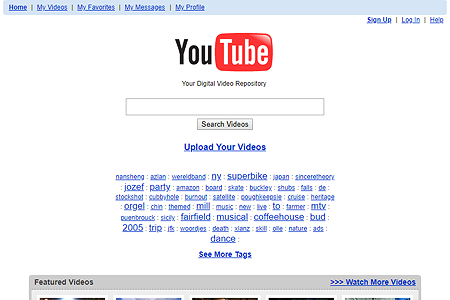
2005
June
23rd
Reddit social network. Users on Reddit submit or share content that is then rated by the community. Content is divided into thematic categories called subreddits. The name Reddit is a play on the phrase “I read it”.

2005
August
10th
Opera Software introduced Opera Mini, a web browser for mobile phones with J2ME (Java 2 Mobile Edition) support. The Opera Mini browser could be installed on most mobile phones in common use at the time, including those that could not otherwise run a normal web browser. The uniqueness of Opera Mini lay in the use of Small-Screen Rendering technology, where the requested pages were first data and appearance edited on Opera’s servers and then displayed to the user in the Opera Mini browser only after optimization.

2005
August
26th
Alex Tew, a British student, launched the Million Dollar Homepage, which soon became an example of successful viral marketing and an Internet phenomenon. The page was a million pixels divided into a 1000×1000 px grid. Alex Tew offered to sell 1 pixel for a dollar, with the smallest advertising space an advertiser could buy for their link being 10×10 px. The Million Dollar Homepage gained unprecedented popularity in a very short time, and the last 1000 pixels were sold on January 1, 2006 at an eBay auction.

2005
November
14th
Urchin Software Corporation, which was developing a tool for the acquisition of statistical data about website users. In November 2005, Google launched an enhanced version of this tool under the name Google Analytics. Since 2006, the basic version of this service has been available for free. Website owners can track traffic, analyze user behavior, and record conversions. Google Analytics is currently the most widely used web analytics tool.

2005
December
3rd
Adobe Systems bought its rival company, Macromedia, for $ 3.4 billion. Programs such as ColdFusion, Captivate, Director, Dreamweaver, Fireworks, Flash, Flex, FreeHand, and HomeSite were added to the Adobe software portfolio.

2006
January
14th
John Resig announced the creation of the jQuery JavaScript library at BarCamp NYC. The jQuery library emphasizes interaction between JavaScript and HTML. jQuery makes it easy for web developers to create recurring events, animations, or manipulate cascading style sheets.

2006
March
21st
microblogging service Twitter. The social network Twitter allows users to read and send short posts referred to as “tweets”. The length of individual tweets was initially limited to 140 characters. In November 2017, the post limit was doubled to 280 characters.
the first hashtag (#) appeared on Twitter, used by user Chris Messina in a tweet related to the #barcamp conference. Six years after its launch in March 2012, the microblogging service Twitter has reached more than 140 million active users who send 340 million tweets per day.

2006
August
Sven Lennartz and Vitaly Friedman created a portal for web designers and developers called Smashing Magazine. The portal provides regular news from the world of web design, user experience, or web development. Smashing Magazine also publishes research publications and organizes regular conferences and workshops. Smashing Magazine is currently the most visited web site for web design and related fields.

2006
October
5th
CSS preprocessor called Sass 0.1.0 (Syntactically awesome style sheets). Sass preprocessor is a scripting language interpreted or compiled into cascading styles. To the CSS syntax, Sass adds variables, mixins, selector inheritance, nesting rules, arithmetic operators, and other features.

2006
November
14th
Zune handheld multimedia player. The simple and clean design of Zune control features is considered to be one of the first uses of flat design in user interface.

2007
January
9th
Steve Jobs introduced the first iPhone smartphone model. The phone included the Safari web browser, allowing users to surf the web at ease.

2007
July
4th
CSS-Tricks portal. The portal brings web designers daily news and tutorials from the world of web design, particularly focusing on cascading styles.

2007
August
Behance 1.0 community platform, which allows designers, photographers, and artists from different fields to present their creative work in the form of online portfolios. In December 2012, Behance was purchased by Adobe Systems.

2007
September
5th
CSS Grid specification. This CSS module defines a set of properties for creating a layout fitted into a regular grid that consists of rows and columns. The CSS Grid makes it easy to create complex and full-page layouts without the need of using cascading style layout methods involving float and positioning. CSS Grid features are currently supported by most major browsers.

2007
September
5th
Silverlight as an application framework for developing and running rich web applications focused on streaming media. Later versions of Silverlight, often compared to its Flash predecessor, offered tools and CLI support for developers and supported animation and graphics. Silverlight received negative criticism for its Extensible Application Markup Language, and on October 12, 2021, Microsoft ended support for Silverlight on Internet Explorer 11, the only web browser at the time that supported it.

2008
September
2nd
In December 2008, the first stable version of Google Chrome 1.0 was released. Since January 2009, Chrome has been available for MacOS, and in February 2012, its first beta version for Android 4 was released. At the turn of April and May 2012, Chrome surpassed the popularity of Internet Explorer and became the most widely used web browser. In 2018, Google Chrome had more than 66% of the global market share.

2008
September
15th
Stack Overflow was created by Jeff Atwood and Joel Spolsky as part of the Stack Exchange Network to serve as a question-and-answer website for programmers. Participation on Stack Overflow was encouraged by a reputation system; users would earn points and badges based on the quality of questions asked and answers given, as determined by user votes. At the end of 2022, Stack Overflow served more than 100 million people each month.

2008
December
11th
Web Content Accessibility Guidelines (WCAG 2.0). WCAG 2.0 is divided into 4 basic principles, according to which the content and web control features must be perceptible, operable, understandable and robust enough to work with today’s and future technologies. The basic principles of WCAG 2.0 consist of 12 general rules that are linked to the control criteria for which web content can be tested. There are three levels which refer to the extent to which the content satisfies the requirements: A (lowest), AA, AAA (highest).

2009
February
9th
Facebook introduced its “like button” feature for the first time. Clicking the button with a thumb up icon indicates a user’s positive reaction to the content of the web page on which the button is located. In 2011, Google introduced a similar button to mark one’s favorite content called the +1 button for its Google+ social network.

2009
March
BEM, standing for Block, Element, Modifier.

2009
June
CSS preprocessor called Less 1.0, a dynamic styling language for cascading styles. The Less language was influenced by the existing Sass preprocessor. Less adds variables, mixins, arithmetic calculations, nesting rules and functions to the CSS syntax.

2009
June
3rd
Bing (formerly MSN Search, Windows Live Search and later Live Search), a “decision engine” created to satisfy initial queries while also presenting more retrieved information than its contemporaries. Its search results included the user’s previous searches and related searches from other users. At its peak, Bing became one of the largest search engines in the United States, second only to Google.

2009
July
8th
Dribbble design community portal. Graphic designers, illustrators, web designers, typographers, and other related creative professionals can share their work on Dribbble in 400×300 px. Dribbble is currently the largest community website for designers.

2009
July
23rd
2009
September
9th
Typekit. Typekit works on a subscription basis and offers an extensive font library that developers can place on a website using the @font-face CSS rule. In October 2011, Typekit was purchased by Adobe Systems.

2009
September
23rd
CSS Awards. The portal gives awards in several categories based on the vote of the community of visitors and a panel of judges. On February 24, 2011, the portal was named Awwwards, and as of 2014, it holds regular conferences.

2010
March
6th
the first prototype of Pinterest, a social network that allows users to share photos, create collections of images and organize them by topics such as interests, hobbies, events and more. In October 2016, the social network Pinterest used more than 150 million active users per month.

2010
April
8th
Web Open Font Format (WOFF) to the W3C. The WOFF fonts are currently supported by all major browsers.

2010
April
29th
Steve Jobs penned a controversial open letter titled “Thoughts on Flash” while he was CEO of Apple, criticizing Adobe Flash and outlining why it would not be permitted on Apple’s iOS hardware. Jobs’ reasons included poor security, high energy consumption, a lack of touch support, and a claim that Flash was effectively a closed system. Adobe CEO Shantanu Narayen described the letter as an attack. Publications initially had varied responses to the letter, though tended to agree retrospectively that Jobs was right.

2010
May
19th
Google Web Fonts (now called Google Fonts). Fonts are hosted on Google’s servers, and the library now has nearly 900 font families that users can use on their websites for free.

2010
May
25th
Ethan Marcotte published an article entitled “Responsive Web Design” in the online magazine A List Apart. The author describes a new way of styling HTML documents which allows for an optimization of website content display with regard to resolution or display size. Basic responsive web design techniques include fluid grid, flexible images, and CSS3 module media queries.

2010
September
7th
vector graphics editor Sketch 1.0. Sketch is designed for MacOS only and has gained a lot of popularity among the web design community over the recent years.

2010
October
6th
Instagram app for sharing photos and short videos in the App Store. The app gained a lot of popularity among users within a few months and in December of the same year, more than 1 million users were using it. In April 2012, Instagram was acquired by Facebook for approximately $1 billion. In February 2013, the number of active monthly Instagram users reached the 100 million milestone.

2010
October
21st
Windows Phone 7, a mobile phone whose user interface was created using flat design. The new visual style received positive feedback, and Microsoft used flat design elements in the design of the Windows 8 graphics interface. Flat design has also gained considerable popularity among web designers and has become one of the major visual trends in web design after 2010 along with skeuomorphism and material design styles.

2011
January
31st
Stylus 0.0.1. The CSS preprocessor Stylus syntax was based on the existing Sass and Less preprocessors.

2011
August
19th
CSS framework Bootstrap in mid-2011. The framework was originally developed to help maintain the HTML/CSS and JavaScript code consistency in Twitter applications. In August 2011, Bootstrap 1 was released as an open source tool and is currently one of the most popular CSS frameworks among web designers. In January 2012, Bootstrap 2 was released, supporting a responsive web layout.

2012
June
18th
CodePen to give developers and designers of any skill level the option to edit front-end languages in a browser-based code editor, visualizing results in real-time. Users would create “pens,” snippets of code that could be shared with other users. Frameworks, libraries, and UI patterns were organized into topics where users could browse and request specific resources.

2012
June
19th
Media Queries specification. The CSS3 Media Queries module allows for adaptable web page rendering based on various factors such as screen resolution or size. Media Queries are one of the basic techniques used in designing responsive sites.

2012
October
1st
TypeScript is a free, open source programming language created by Microsoft in response to complex JavaScript code. A demand for custom tools that would make developing components within JavaScript easier to write led to this specific superset of JavaScript that allows optional static typing.

2013
May
29th
React javascript library (sometimes referred to as React.js or ReactJS) at the JSConf US conference. The open-source React library is designed to make it easier to create user interfaces and UI components for web applications. React can also be used to create single-page or mobile applications. The development and maintenance of the React web framework is currently handled by Facebook along with a large community of independent developers.

2013
August
19th
CSS framework Boostrap 3. The new Bootstrap version consistently applied a responsive web layout and mobile-first access. The layout of templates and components was redesigned in flat design style.

2014
June
25th
Google introduced a new graphic style called Material Design at the Google I/O conference. Since 2015, Google has redesigned most of its applications and services using the consistent visual style of Material Design. According to Google’s definition, Material Design is a “visual language that synthesizes the classic principles of good design with the innovation and the possibility of technology and science.”

2014
October
28th
HTML5 markup language. The HTML5 version has brought an improved browser multimedia playback support, new semantic tags that better define page structure, offline application support, and the <canvas> tag that can interpret vector graphics with an option to insert images.

2015
March
30th
Microsoft Edge web browser for Windows 10. Microsoft Edge was subsequently included as a default browser on Windows 10 Mobile and Xbox One operating systems, definitively replacing the older Internet Explorer 11 and Internet Explorer Mobile browsers. On December 6, 2018, Microsoft announced that Edge will no longer use its own EdgeHTML rendering engine and will be based on Chromium, Google’s open source rendering engine.

2016
September
27th
Figma in 2011, with the goal of creating a design tool that allowed real-time collaboration in the same file. A free, invite-only preview of Figma was introduced in December of 2015 before its public release the following year. Figma was the first design tool to combine native application functionality and browser-based accessibility.

2017
June
25th
Adobe Systems announced that it would cease support for Flash in 2020 and would no longer issue additional security updates for Adobe Flash Player. In the field of web multimedia and interactivity, Flash became gradually replaced by HTML5, WebGL, or WebAssembly technology.

2022
September
15th
Adobe announced the tentative acquisition of Figma, the first design tool that combined native application functionality and browser-based accessibility, for approximately $20 billion USD.
